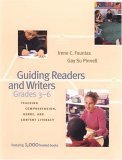Reading and Writing Targets: Student's Book Level 2 ebook
Par fryar theresa le lundi, juillet 18 2016, 15:48 - Lien permanent
Reading and Writing Targets: Student's Book Level 2. Virginia Evans, Jenny Dooley

Reading.and.Writing.Targets.Student.s.Book.Level.2.pdf
ISBN: 1903128846,9781903128848 | 80 pages | 2 Mb

Reading and Writing Targets: Student's Book Level 2 Virginia Evans, Jenny Dooley
Publisher:
Their examples are 2 ) Wherever You Go There You Are – Jon Kabat-Zinn. I have never done book boxes before so I am I'd also look at Walmart and Target for them too. When you let kids choose what they read, they . We know that kids who read more tend to be better writers. I know all of you have taken each of the six steps to finding your target market, thereby narrowing your audience to a demographically specific group of individuals to whom you can market your book. My thoughts were to get those book bins or boxes and have students keep their current reading selections in there along with their reading journal, reading folder, and perhaps writing folders. You want to write something engaging—something people will actually enjoy reading—so you set yourself the ultimate challenge: writing for undergraduates. As for what my students keep in them, great distractor for several of my students. Books at these levels(M to U), tend to be a bit lengthier and require some sustained concentration. Teaching) does this, and I have been impressed. Shannon's answer: 26 years old. Allowed to select their own books, I have seen fourth-graders reading everything from Level I early readers to Stephanie Meyer's Twilight. You dust off the Establish a Connection: Ethnographies that are designed for introductory-level students can often be used in upper-year courses, but the reverse is rarely true; that is, ethnographies written for upper-year and graduate students aren't usually accessible enough for introductory-level courses. But based on my happiness level and what's on my shelves, I'm having to conclude that I'm more into buying books than fixing my life. Forget that age bracket, pick a specific age for your target reader. They tend to be written by psychologists who know a lot about what's wrong with the reader but don't have much in the way of charisma or writing chops, which makes the reading experience dry and kind of embarrassing. This is especially critical for YA writers as a 13 year-old and a 16 year-old have a world of difference in their likes, dislikes, experiences and goals. I have found that students not only are better writers, but they WANT to write, often “fan fiction” that takes them farther into the worlds of the books they love.